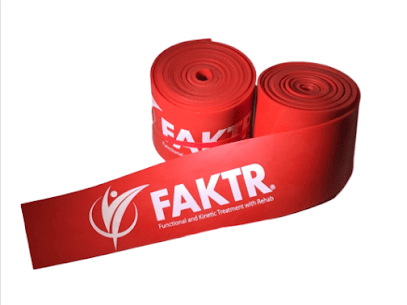Soft tissue injuries are a common occurrence, impacting individuals of all ages and activity levels. Whether caused by sports activities, accidents, or everyday movements, these injuries can lead to discomfort, reduced mobility, and a significant impact on overall well-being. In the realm of rehabilitation, it’s essential to explore innovative approaches that go beyond traditional methods. One such groundbreaking solution is Functional and Kinetic Treatment with Rehabilitation (FAKTR). In this comprehensive guide, we’ll delve into the world of soft tissue injuries, the limitations of conventional rehabilitation, and why FAKTR stands out as a transformative rehabilitation solution.

Soft Tissue Injuries: An In-Depth Look
Soft tissue injuries encompass a range of conditions affecting muscles, tendons, ligaments, and other connective tissues. Whether it’s a muscle strain, tendonitis, or ligament sprain, these injuries can result in pain, swelling, and limited range of motion. Understanding the root cause and the impact on the body is crucial for effective rehabilitation.
Soft tissue injuries can occur due to various reasons, including sudden trauma, overuse, or repetitive stress. Athletes, weekend warriors, and individuals engaged in physically demanding jobs are particularly susceptible. The consequences of untreated or poorly rehabilitated soft tissue injuries may extend beyond immediate discomfort, leading to chronic issues and reduced quality of life.
The Limitations of Traditional Rehabilitation
While conventional rehabilitation methods play a vital role in injury recovery, they often have limitations when it comes to addressing soft tissue injuries comprehensively. Standard protocols may focus on general strengthening exercises and rest, overlooking the specific needs of soft tissues. This gap in traditional approaches emphasizes the need for innovative and targeted solutions like FAKTR.
Traditional methods may fall short in providing optimal outcomes for soft tissue injuries due to several reasons. The complexity of soft tissue structures, the variation in injury types, and the unique requirements of each individual necessitate a more personalized and dynamic approach to rehabilitation.
What Sets FAKTR Apart
Functional and Kinetic Treatment with Rehabilitation (FAKTR) emerges as a distinctive and highly effective solution for soft tissue injuries. Unlike conventional methods, FAKTR is a comprehensive chiropractic rehabilitation method that tailors treatment plans to the specific problem, injury, and patient. The versatility of FAKTR lies in its ability to utilize various techniques and movement protocols, creating a customized approach for each individual.
FAKTR incorporates joint and muscle flossing, manual and instrument-assisted soft tissue mobilization, myofascial release, functional movements, training, therapeutic exercises, taping, and cupping. One key element is instrument-assisted soft tissue mobilization (IASTM), where chiropractors use small metal or plastic instruments to massage and free up restricted tissues. This breaks down scar tissue, increases blood flow, improves movement, reduces pain and stiffness, and accelerates healing.
When to Consider FAKTR for Rehabilitation
Signs and Symptoms Indicating FAKTR May Be Beneficial
- Persistent Discomfort: If you’re experiencing persistent discomfort despite traditional treatments, FAKTR may offer a targeted solution.
- Limited Range of Motion: Soft tissue injuries often result in restricted movement. FAKTR’s focus on functional movements aims to enhance mobility effectively.
- Sports Injuries: Athletes, in particular, can benefit from FAKTR, addressing specific conditions common in sports, such as strains, sprains, and overuse injuries.
Cases Where FAKTR Excels Compared to Traditional Methods
- Chronic Conditions: FAKTR’s versatility makes it an excellent option for chronic soft tissue conditions, providing ongoing relief and management.
- Individualized Care: FAKTR doesn’t follow a one-size-fits-all approach. The tailored nature of FAKTR treatment plans ensures that the unique needs of each patient are addressed.
The FAKTR Experience: What to Expect
Navigating a FAKTR session involves a thorough assessment, personalized treatment plan, and a combination of techniques to address specific soft tissue issues. The experience is not only effective but also tailored to the individual’s comfort and needs.
Step-by-Step Guide to a Typical FAKTR Session
- Assessment: Your practitioner will inquire about your condition, evaluate the affected area, and recommend a customized treatment plan.
- Treatment Protocols: FAKTR incorporates various protocols, such as joint and muscle flossing, soft tissue mobilization, and functional movements, ensuring a holistic approach.
- IASTM: Instrument-assisted soft tissue mobilization plays a pivotal role, breaking down scar tissue, enhancing blood flow, and promoting overall healing.
Conclusion
In conclusion, understanding soft tissue injuries and considering FAKTR as a rehabilitation solution involves recognizing the limitations of traditional methods and embracing innovative approaches. FAKTR’s effectiveness lies in its personalized, dynamic, and versatile nature, making it a transformative choice for individuals seeking optimal recovery from soft tissue injuries. Don’t let discomfort limit your potential—explore the possibilities with FAKTR and embark on a journey to enhanced well-being and mobility. Contact us at Elite Health & Wellness to learn more about integrating FAKTR into your rehabilitation plan. Unlock a new chapter of recovery and experience the transformative power of Functional and Kinetic Treatment with Rehabilitation.

